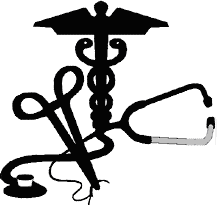Anatomy and Physiology 1 - Course Outline

Anatomy and Physiology I is the first of a two-course sequence. It is a study of the structure and function of the human body including cells, tissues and organs of the following systems: integumentary, skeletal, muscular, nervous. Emphasis is on interrelationships among systems and regulation of physiological functions involved in maintaining homeostasis.
I. Organization of the Body
1. Characteristics of Life
2. Cells, Tissues, and Organ Systems
3. Body Cavities and Serous Membranes
4. Maintenance of homeostasis and feedback loops
5. Medical terminology
6. Exploration of health careers
II. Cells & Tissues
1. Cell Structure, Membranes and Organelles
2. Cell structure and function
3. Movement of substances and metabolism
4. Cell control (DNA)
5. Mitosis and Cell Division
6. Function (epithelial, muscle, connective, nerve)
7. Location of tissues
8. Epithelial tissue and the evolution of skin color
III. The Skeletal System
1. General functions of the skeletal system
2. The bone matrix
3. Names and location of the bones of the skull
4. Names and location of the bones of the body
5. Male and female differences and changes during aging
6. Types of joints
7. Disorders of the skeletal system
8. Investigation of a disarticulated skeleton
IV. The Muscular System
1. General Functions
2. Skeletal Muscle Cells - Microscopic Structures
3. Muscles - Face, Neck, Arms, Thorax, Abdomen, and Legs
4. Disorders of the muscular system
5. Investigation of muscles found in a model organism
V. The Nervous System
1. Nerve Cells - Structure, Type, and Function
2. Description of Nerve Impulses - During Action Potential
3. Structures of the brain and spinal cord
4. Cranial nerves
5. Disorders of the nervous system
6. Investigation of a preserved sheep brain
Classroom Resources
Anatomy and Physiology Class Site
Chap 1: Introduction to Anatomy
Chap 3: Cells
Chap 5: Tissues
Chap 7: Skeletal
Chap 8: Muscular
Chap 9: Nervous
Chap 10: Senses
Chap 11: Endocrine
Chap 12: Blood
Chap 13: Circulatory
Chap 15: Digestive
Chap 16: Respiratory
Chap 17: Urinary
Chap 19: Reproductive